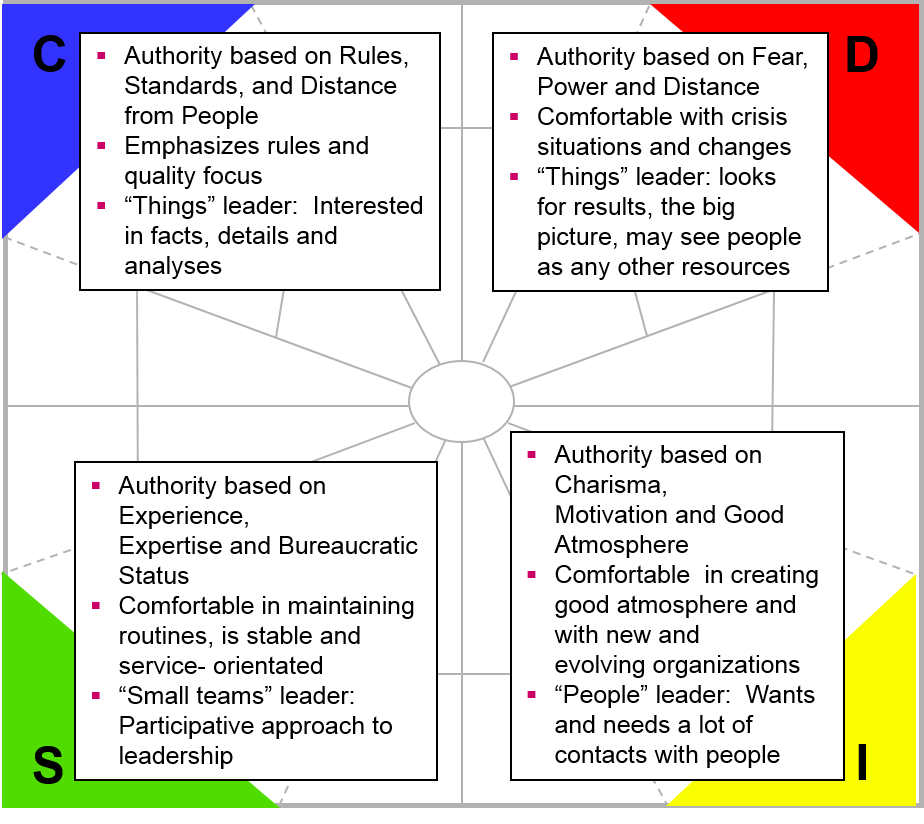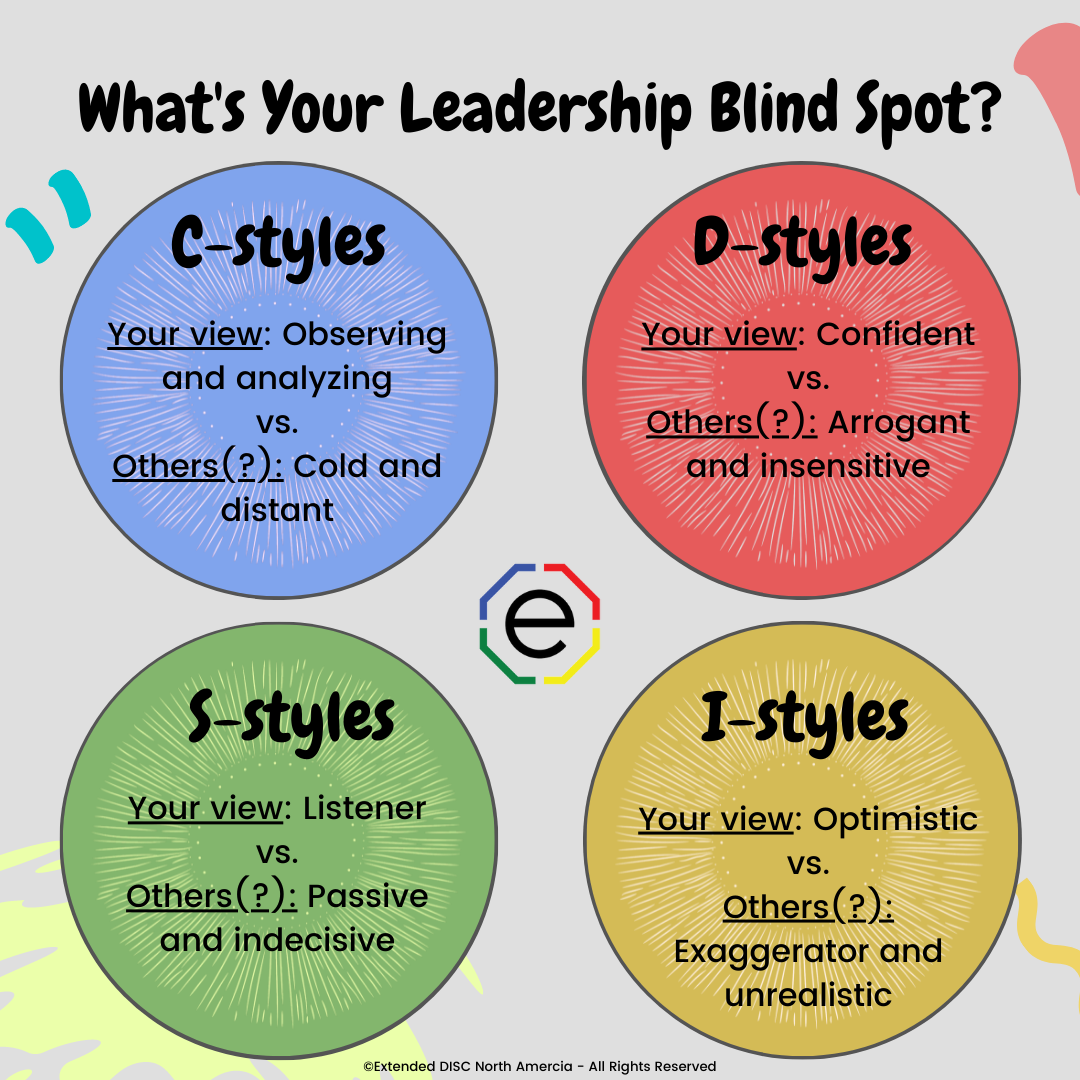You can still have leadership blind spots; despite your best efforts. Can you recognize them?
You tend to lead in your natural style because it’s most comfortable for you. However, there may be a disconnect between how you see yourself as a leader and how your employees see you. We call this your blind spot.
There are different ways to define blind spots, but we identify them as the gaps between where you see yourself and where you’re seen by others. They can potentially hinder your success and prevent you from reaching your full potential. DISC provides opportunities to identify your blind spots and act on them.
Let’s start by reviewing leadership styles.
What’s your leadership style?

D-styles are big picture focused. You tend to lead with authority, power, and distance. You are comfortable leading in crisis situations and change; more so than other styles. We consider you a ‘things’ leader; expecting results quickly and seeing your employees as any other resource.
I-styles use charisma to motivate employees. You create positive team atmospheres; encouraging networking and interactions. You are comfortable with new and evolving settings. We see you as a ‘people’ leader; preferring to focus on people and emotions. You thrive when you have a variety of contacts with your employees.
S-styles are more service-oriented and base their authority on experience, expertise, and bureaucratic status. You are more comfortable maintaining stability and establishing routines. We see you as a ‘small teams’ leader; someone who wants to build close relationships. You take a more participative approach; often rolling up your sleeves and being a team member.
C-style’s authority stems from rules and standards. You are a more reserved and formal leader; preferring to maintain a distance from your team. You emphasize quality and take the time to understand the processes and systems. Oftentimes, others come to you for your expertise and ability to problem solve. You are a ‘things’ leader who prefers to focus on analyses and facts.
What are your potential blind spots?

You’ve laid out the plans and direction for the next project. The process and goals are clear to you. So, why are some of your employees confused and disgruntled? As a D-style leader, your confidence and authority may be coming across as arrogant and insensitive. Why? You may have forgotten to ask for input and perhaps, exceeded authority.
You’ve laid out the best plans possible. You’ve sold your ideas and know it’s going to work! So, why are some of your employees pessimistic and anxious? As an I-style leader, your natural optimism truly believes in being able to accomplish the plans. But, are the plans grounded in supporting data? Have you provided your team with enough information and offered both sides of the issues? Your optimism may come across as exaggeration and unrealistic.
You’ve pondered for a long time and gotten input from everyone. You’ve pondered some more and now you may be ready to lay out the plans. So, why are some of your employees exasperated? As an S-style leader, your desire to make collaborative decisions takes time. Your preference for listening and quiet ponderance may come across as indecisiveness and passivity to others.
You’ve researched, reviewed the data, and systematically laid out the plans. Next, you’ve sent out a detailed email to your team. So, why are your employees confused or offering alternative options? Have you asked for input and generated discussion? Have you considered some of the ‘outside the box’ suggestions? Your preference for analyzing and keeping a distance from your team may come across as cold and rigid.
The most successful leaders
 Where do you go from here? Share your results with people who know you and ask for feedback. They can help you identify your blind spots. Be curious and reflect:
Where do you go from here? Share your results with people who know you and ask for feedback. They can help you identify your blind spots. Be curious and reflect:
- Am I really showing up this way?
- How am I coming across to my employees?
- Am I making the best adjustments when leading my employees?
- D-style leaders – are you slowing it down and asking for input?
- I-style leaders – are you letting others speak and are you taking time to review data?
- S-style leaders – are you verbalizing your actions and thoughts and moving quicker?
- C-style leaders – are you focusing more on your team members than tasks?
At the end of the day, you absolutely should rely on your natural leadership style and lead with your strengths. The goal is not to change who you are, but to build confident self-awareness and situational awareness. Identifying and developing beyond your blind spots provides the greatest opportunity to achieve your full potential.
